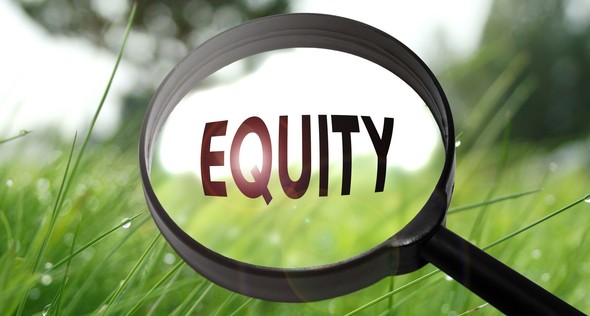|
Sept. 10, 2019
Please forward to your sub grantees and contact your OFAH grant manager if you have any questions.

In the spring of 2019, Commerce partnered with the Washington Low Income Housing Alliance’s (WLIHA) Emerging Advocates and Resident Action Project members to facilitate four listening tour events to hear from people with lived experience of homelessness. The events were held in Spokane, Yakima, Aberdeen and Mt. Vernon. The goal of the listening tour was to receive input on two questions:
- What can the state do to end homelessness?
- What is getting in the way of ending homelessness?
Below is a summary of the results. For more detailed information check out the State of Washington Homeless Housing Crisis Response System Strategic Plan (Appendix A) coming soon!
The most prevalent response for the question, “What is getting in the way?” involved how people experiencing homelessness are treated in their local communities. Bias, negative attitudes and a lack of compassion and understanding among housed neighbors were repeated throughout the sessions.
Growth in existing services and capacity to create new ones were recommended actions the state should take to address homelessness. An expansion of current housing services, affordable units, temporary housing options and outreach services were suggested. Participants' suggestions echoed an outcry heard across the state, as well as nationally. Rental vacancy rates remain unhealthy, new affordable housing units aren’t built quickly enough, NIMBY-ism suppresses creative solutions, and misinformation fuels bias toward those experiencing homelessness.
Commerce will continue pursuing feedback from those with lived experience to ensure we stay connected to those most impacted by our policies and programming. The information we received makes it clear that housing crisis response systems must advocate for the needs of the houseless, because as one listening tour participant stated, “When the most vulnerable of us thrive, we all thrive.”
|

The Department of Social and Health Services (DSHS) announced program changes to the Temporary Assistance to Needy Families (TANF) program. These changes include a time limit extension for families experiencing homelessness. This means families who are currently homeless and have used up all 60 months of TANF assistance may now qualify for additional months of TANF. This provides a critical support to families in crisis due to homelessness.
In addition, permanent disqualification from the TANF program due to recurring non-compliance with WorkFirst participation requirements is eliminated. This means families who have struggled to meet participation requirements in the past, and as a result were permanently disqualified from receiving TANF and WorkFirst support services, may now reapply for TANF. This provides an opportunity for families to receive the supports they need to work and navigate the path toward economic stability.
Both of these program changes became effective on July 28.
Partners who serve families impacted by these changes are asked to encourage families to consider applying for assistance. This can be done by:
- Calling the customer service contact center at 1-877-501-2233.
- Completing a new application at WashingtonConnection.org.
- Visiting a local community services office (CSO).
For additional information, please contact Sarah Mintzer, TANF/WorkFirst Program Manager at Sarah.Mintzer@dshs.wa.gov. A flyer describing these changes is also available via the DSHS Publications Library.
|
 Commerce is soliciting proposals from organizations interested in providing housing support services to students and their families experiencing homelessness and unaccompanied students experiencing homelessness. In addition to increasing housing stability for students and their families, the goal of the program is to encourage the development of collaborative strategies between housing and education partners.
Eligible organizations must have three or more years of experience delivering housing-related services to people experiencing homelessness. For more details, download the request for proposal here.
Commerce hosted a pre-proposal webinar on Thursday, Sept. 5. You can access the recording here.
Questions about the Homeless Student Stability Program and this application process may be directed to Megan Kendig, Department of Commerce Program Manager, 360.725.2920.
Proposals are due Sept. 23.
 Myth: Housing stability planning needs to happen only every 90 days.
FACT: Income re-certification for some programs needs to happen, at a minimum, every 90 days. Housing stability planning and checking in should happen at every possible opportunity and interaction with clients.
Plans create a clear road map with housing goals from the very beginning. Clients are immediately engaged and motivated. Breaking down the goal of housing into concrete and attainable steps provides opportunities to celebrate success and helps clients feel their goals are manageable. It is not meant to be punitive. If a client is struggling in completing tasks, the plan should be modified to adjust for the challenges they are facing.
The plan documents the steps both the client and the case manager will take with clear benchmarks and timelines so everyone knows what happens next, when things need to be done, and who is responsible for each action.
The plan can follow the client as they transition to other programs and does not need to be recreated if they enroll in a different program. The emphasis of the plan is to keep housing, not simply attain housing.
 Racism and inequity permeate our homeless service system and reaches into many areas of how we do business. In order to make change, we must look carefully at all of the ways it shows up. Over the past few months, we have shared resources on evaluating systems, agencies and programs for inequities in the services provided to those experiencing homelessness. Over the next couple of months, we will examine ways that oppression and inequity show up within our organizations. This month, we will review an article published by the Washington Coalition of Sexual Assault Programs (WCSAP) titled, Financial Oppression: The unchecked Discriminatory Practice in our Movement.
In this article, WCSAP expose practices that contribute to financial and accounting inequity. Some of these include:
- Severe wage disparities.
- A lack of clarity or checks-and-balances across the board.
- A heavy burden is placed on employees, and they frequently feel mistrusted about their actual expenditures or discussions about fiscal management and budgets.
- Severe red tape and resistance from the fiscal person and executive management who give rein to the financial officer.
We encourage you to read the full article to learn more about financial oppression. We also encourage you to start conversations with your teams, evaluate ways that your agency can do better and make hard changes to ensure equity for all.
|